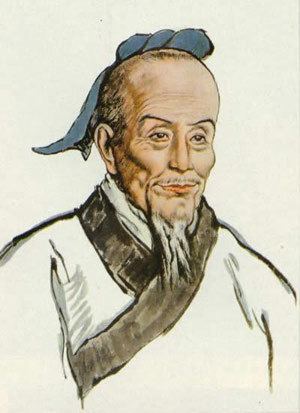Traditional Chinese 祖沖之 Hanyu Pinyin Traditional Chinese 文遠 Name Zu Chongzhi Died 500 AD, China | Simplified Chinese 祖冲之 Wade–Giles Tsu Ch'ung-chih Simplified Chinese 文远 Role Mathematician | |
 | ||
Zu Chongzhi & Pi -- Chinese Science and Technology
The Chronicles of Zu Chongzhi
Zu Chongzhi (429–500 CE), courtesy name Wenyuan, was a prominent Chinese mathematician and astronomer during the Liu Song and Southern Qi Dynasties.
Contents
- Zu Chongzhi Pi Chinese Science and Technology
- The Chronicles of Zu Chongzhi
- Life and works
- Astronomy
- Mathematics
- The South Pointing Chariot
- Named after him
- References

Life and works
Chongzhi's ancestry was from modern Baoding, Hebei. To flee from the ravage of war, Zu's grandfather Zu Chang moved to the Yangtze, as part of the massive population movement during the Eastern Jin. Zu Chang (祖昌) at one point held the position of Chief Minister for the Palace Buildings (大匠卿) within the Liu Song and was in charge of government construction projects. Zu's father, Zu Shuozhi (祖朔之) also served the court and was greatly respected for his erudition.
Zu was born in Jiankang. His family had historically been involved in astronomy research, and from childhood Zu was exposed to both astronomy and mathematics. When he was only a youth his talent earned him much repute. When Emperor Xiaowu of Liu Song heard of him, he was sent to an Academy, the Hualin Xuesheng (華林學省), and later at the Imperial Nanjing University (Zongmingguan) to perform research. In 461 in Nanxu (today Zhenjiang, Jiangsu), he was engaged in work at the office of the local governor.
Zu Chongzhi, along with his son Zu Gengzhi wrote a mathematical text entitled Zhui Shu (綴述; "Methods for Interpolation"). It is said that the treatise contains formulas for the volume of the sphere, cubic equations and the accurate value of pi. This book didn't survive to the present day; it has been lost since the Song Dynasty.
His mathematical achievements included:
Astronomy
Zu was an accomplished astronomer who calculated the values of time with unprecedented precision. His methods of interpolating and the use of integration is far ahead of his time. Even the astronomer Yi Xing's isn't comparable to his value (who was beginning to utilize foreign knowledge). The Sung dynasty calendar was backwards to the "Northern barbarians" because they were implementing their daily lives with the Da Ming Li. It is said that his methods of calculation were so advanced, the scholars of the Sung dynasty and Indo influence astronomers of the Tang dynasty found it confusing.
Mathematics
The majority of Zu's great mathematical works are recorded in his lost text the Zhui Shu. Most scholars argue about his complexity since traditionally the Chinese had developed mathematics as algebraic and equational. Logically, scholars assume that the Zhui Shu yields methods of cubic equations. His works on the accurate value of pi describe the lengthy calculations involved. Zu used the Liu Hui's π algorithm described earlier by Liu Hui to inscribe a 12,288-gon. Zu's value of pi is precise to six decimal places and for a thousand years thereafter no subsequent mathematician computed a value this precise. Zu also worked on deducing the formula for the volume of a sphere.
The South Pointing Chariot
The south-pointing chariot device was first invented by the Chinese mechanical engineer Ma Jun (c. 200–265). It was a wheeled vehicle that incorporated an early use of differential gears to operate a fixed figurine that would constantly point south, hence enabling one to accurately measure their directional bearings. This effect was achieved not by magnetics (like in a compass), but through intricate mechanics, the same design that allows equal amounts of torque applied to wheels rotating at different speeds for the modern automobile. After the Three Kingdoms period, the device fell out of use temporarily. However, it was Zu Chongzhi who successfully re-invented it in 478, as described in the texts of the Book of Song and the Book of Qi, with a passage from the latter below:
When Emperor Wu of Liu Song subdued Guanzhong he obtained the south-pointing carriage of Yao Xing, but it was only the shell with no machinery inside. Whenever it moved it had to have a man inside to turn (the figure). In the Sheng-Ming reign period, Gao Di commissioned Zi Zu Chongzhi to reconstruct it according to the ancient rules. He accordingly made new machinery of bronze, which would turn round about without a hitch and indicate the direction with uniformity. Since Ma Jun's time such a thing had not been.
